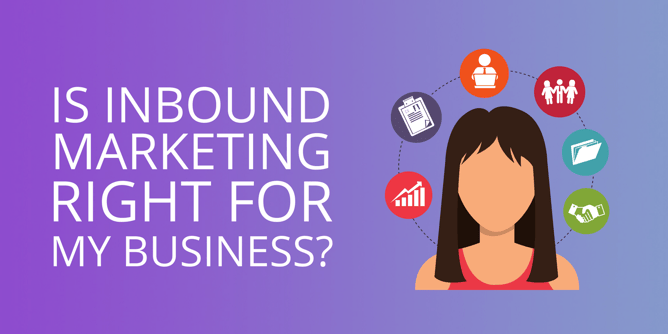
I grew up in the 1990s, which means I remember dial-up internet and the accompanying drama that centered around the phone because of it. Since connecting to the internet tied up your phone line and disabled incoming and outgoing calls, there was a serious tradeoff between the two activities. In practice, this meant that if my parents were expecting a call from someone, internet access was a no-go. Good times.
If I permit my nostalgia to swell a little further, I recall my childhood containing another form of phone-line drama: Telemarketers. If a day went by without half a dozen cold calls, it was cause for celebration. My father even coined a phrase for the telemarketers who called us during dinner that went something like this: “Hey, let me stop you right there. Whoever you are and whatever you’ve got to say is infinitely less important than dining with my family after a long day, so you’ll have to try another time.” He’d hang up without waiting for a response.
In a nutshell, that’s what traditional outbound marketing looks like. And that is the type of response it tends to produce.
Inbound Marketing – What It Is And What Sets It Apart
At its core, inbound marketing revolves around content, quality, and relationship-building. It’s focused on creating relevant, helpful content that a potential customer or client will appreciate because of its value to them.
SEE ALSO: Focus On Value: Selling Strategy And Services Isn't Enough
Inbound is intentionally non-invasive and unaggressive; its messaging appears only in areas where the intended audience would go naturally. It seizes advantage of social currency by proactively answering real questions people have and earning their time and trust. And it plays honestly off the social psychology of positive reciprocity; people want to repay kindness to those who act benevolent toward them.
Take a moment to consider how different that is from what the marketing industry has been doing for decades.
It doesn’t rely on marketing gimmicks.
It doesn’t focus on interruption and forced communication.
It doesn’t rely on quantity over quality in messaging and outreach.
It doesn’t brazenly assume that every sentient being is a potential customer.
It doesn’t define your customer relationship by attention alone.
It doesn’t relegate you to the footnote or afterthought of someone’s day.
Why Does Any Of This Matter?
I’ll cut straight to it: It matters because of changing times and changing attitudes. In, say, 2005, a clever enough marketer could make a splash with a sufficiently gaudy message over radio, TV, newspaper, and billboards. And those messages do still exist; you see them in all those same places. What isn’t so clear to the untrained eye is the waning success of those messaging techniques.
My father would be flattered if I attributed his lack of dinnertime patience to a progressive mindset ahead of his time. At this point, that’s an accurate assessment: no one has time to listen to someone they don’t know. Few had the time in the 2000s while I was munching on potatoes and pork chops, but nobody has it in 2018. Today’s world features unparalleled competition for people’s diminishing attention in an ever-busier world. There are a million stimuli per day vying for someone’s consciousness. Your flashy colored, big lettered advertisement is not going to cut it.
To say the marketing industry was ripe for an upheaval would be an understatement.
SEE ALSO: How To Achieve Your Goals Through Agile Marketing
That upheaval is inbound. Inbound marketing allows you to avoid the pitfalls of traditional outbound marketing and to cut through the bullshit. Done correctly, it positions you as a continuously resourceful thought leader within your industry. It draws people in for all the right reasons, and therefore tends to produce a higher percentage of qualified leads.
Is It Right For My Business?
That’s a question that deserves some thought; the answer is: It depends.
The first consideration is identifying your goals and determining how your sales process and marketing strategy fit into them. Need to educate your client before contacting them? Looking to have insight into where your leads are in their buyer’s journey before reaching out? Inbound meshes fantastically with these goals. When salespeople follow up with warm leads, the conversations tend to be far more specific, personalized, and successful than the ones produced by cold calling.
Next up, consider how quickly you’re seeking to achieve your goals. Inbound marketing’s intricacy means that it takes longer to see returns on investment, mostly because it takes time to create real value, and time for content to be indexed once it goes live. This downside is counterbalanced by the fact that inbound is extremely economical. Its content remains valuable for a long time after its production, particularly if you focus on writing “evergreen.”
Lastly, assess the size of your market. Companies whose sales are bound to a particular region struggle to take advantage of the global audience that inbound marketing gives you access to. The corollary to this statement is obvious: If you’re not regionally bound, that’s a huge plus for choosing inbound.
Hüify’s Form of Inbound Marketing
We’ve been a part of the inbound industry since the beginning, which means two things: We’ve dealt with its growing pains, and have known it long enough to add a couple adaptations to the formula.
SEE ALSO: 5 Takeaways From Inbound 2017 To Improve Our Agency In 2018
For one, we put an incredible emphasis on humanizing the marketing process. There’s no room for a distanced technique when it comes to inbound; you either work to be approachable and relatable, or your efforts fail. We don’t “have the science” of inbound down; we’re artists of our craft.
The second part deals with style. We’re firm believers that transparency, honesty, and straightforwardness are deciding components of success. In practice, that means we set the pace of our client relationships based on achieving a goal which is verifiable and concrete, like revenue growth. None of that vanity metric stuff. IE: “Reach”.
We’ve seen inbound work time and time again for our clients across a span of industries. Huge increases to conversion rates, blog traffic, and revenue are all recurring themes. Although a comprehensive strategy like inbound takes a great deal of teamwork from both us and the client, the results are always worth it, and never in question.
Helping marketing and sales teams set their revenue goals and implement a successful inbound strategy is what we do. Want to learn more? Click here to see if we can help.


 BACK TO ARTICLES
BACK TO ARTICLES 


